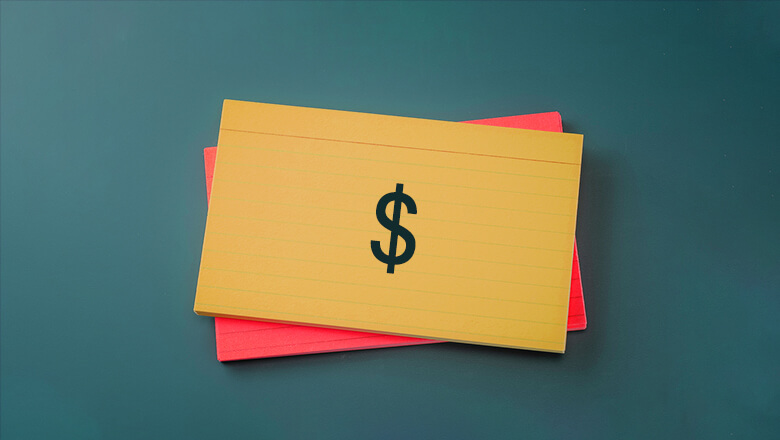How Much Should You Pay For a New Home?
If you’re thinking about buying a property, you may wonder how much you should pay for a new home. After all, that can impact the size (and type) of mortgage you apply for.
The truth is, though, your mortgage is just one piece of the puzzle when deciding how much to spend on a home. To figure out what you can realistically afford, you need to understand all of your potential housing costs, including what may seem like unexpected costs that crop up when you own a property. That way, you can truly prepare for how much money it will take to cover your expenses as a homeowner.
So, are you in the club of those who are wondering, “How much home can I afford?” Then read on for four important tips to help determine whether a home will suit your budget. Given how big an expense homeownership can be, you will likely want to be well armed with information before you start hitting the open houses and making bids.
1. Calculate Potential Housing Costs
If you’re calculating how much you should pay for a new home, it can be an important step to write down all potential costs connected with buying a house and then paying the monthly expenses. This list can include:
• Down payment
• Mortgage payment
• Property taxes
• Homeowners’ insurance
• Mortgage insurance, if applicable
• Closing costs.
Since the mortgage payment is typically a big-ticket budget item, it can be a good move to check out a few different options (say, fixed-rate vs. adjustable-rate; 15-year vs. 30-year terms) from a few lenders and at a couple of different amounts to get a handle on what that cost is likely to be.
Also, you may want to also make a list of:
• Expected repairs
• Planned updates/renovations.
Don’t forget about ongoing costs. It may be tempting to leave this out of your initial budget, but it’s unlikely you’ll find a place that won’t require some changes. These estimates could be a factor in your budget and your decision about what to buy. For instance, you’ll want to prepare for such expenses as:
• Utilities. If you’re moving to a house from a small apartment, you could be paying considerably more in, say, heating and cooling costs.
• Landscaping or other maintenance of your property beyond the house.
You’ll also likely want to make your new house a home, and there is nothing wrong with that as long as you’ve budgeted for the estimated expense. In other words, include the following in your calculations:
• Moving costs
• The cost of new furniture and furnishings (curtains, hardware, the works).
Although these latter expenses aren’t part of your required monthly housing payments, they’re worthwhile to keep in mind.
💡 Quick Tip: Buying a home shouldn’t be aggravating. SoFi’s online mortgage application is quick and simple, with dedicated Mortgage Loan Officers to guide you through the process.
Estimate Your Future Housing Costs
Need help figuring out these costs in more detail? The home affordability calculator below provides additional insight into how much it costs to purchase a home and the expected monthly payment associated with being a homeowner, including insurance costs, property taxes, and closing costs.
2. Determining What Is Paid Up Front
Now that you have an all-encompassing list of what you think a potential property might cost, both for a monthly payment and possible expenses, you can divvy up those costs into two categories: upfront costs and monthly costs.
Upfront costs include things like the down payment on the home and other fees such as closing costs and paying for home inspections. Monthly costs are your recurring mortgage payment, property taxes, and insurance(s), which may be rolled into the mortgage payment or paid separately. There are also other possible expenses you may pay down the line for furniture, repairs, renovations, etc.
This will help you get a handle on how much cash you will need to spend when getting a mortgage and becoming a homeowner. And it will also tell you what it will look like to keep your home up and running, month after month.
As you consider how much you should pay for a new home, know that it may be wise to have a cash buffer as you go into homeownership. In other words, don’t clean yourself out when buying a home. You don’t want to risk overdrafting your bank account, and you need to be prepared for how inflation could cause your expenses to tick up.
Recommended: What to Know About Getting Preapproved for a Home Loan
3. Look at Monthly Costs in Terms of Your Budget
Now that you have an idea of what your monthly housing costs could be, you can begin to fit those into your overall budget.
There are different budgeting methods, but most involve knowing and balancing your take-home pay, the cost of your “needs” and “wants” each month, and how much you are putting towards savings.
As you evaluate your projected homeowner figures, you want to ask yourself:
• Do the numbers work, leaving you with some room to breathe?
• Are you able to save for other financial goals, such as retirement?
• Will you be able to maintain your current quality of life, or will you have to make cuts to accommodate your new housing expenses?
• What do the numbers look like if you were to buy a somewhat more or less expensive home? (This can help you, especially if you are interested in a house that winds up in a bidding war and potentially selling for over the asking price.)
Overextending yourself in order to purchase a home is not recommended. Living paycheck to paycheck and worrying about money after you buy a property could take some joy out of your new nest.
💡 Quick Tip: You never know when you might need funds for an unexpected repair or other big bill. So apply for a HELOC (a home equity line of credit) brokered by SoFi today: You’ll help ensure the money will be there when you need it, and at lower interest rates than with most credit cards.2
4. Considering Unexpected Costs
Being a homeowner can be wonderful and rewarding, but it can also be expensive and, at times, exhausting. Roofs leak. Hot water heaters fizzle out. Gutters need cleaning.
You may want to set proper expectations regarding not only how much homeownership will cost in terms of the typical expenses, but also in terms of the full universe of maintenance and potential costs. Budget accordingly.
Next, you might want to consider what could happen in the event of a job layoff. Even great employees can lose their jobs, so have a plan in the event that this happens. And how would you keep up with costs in the unfortunate event of illness?
If you have no plan for how to make a mortgage payment in the event that you or your spouse loses work, you might not be quite ready for homeownership. You may want to build up your cash reserve before diving in.
For instance, most financial experts recommend that you save three to six months’ worth of expenses in an emergency fund in case of a job loss, health emergency, or other financially difficult events.
Those funds can be vital to see you through a tough financial moment. And if you do have this amount of money set aside (good job!), don’t be tempted to raid it for, say, your down payment or other costs related to buying a home. It’s a very important bundle of cash to have on reserve.
Recommended: How to Shop Around for a Mortgage Lender
The Takeaway
Buying a house can be a huge rite of passage and a big part of adulting. As you contemplate owning your own home, it’s important to be sure you understand both the upfront and ongoing costs of homeownership and know how they fit into your budget. In addition, understanding the unexpected expenses that may crop up can be a wise move.
A key part of your calculations will be checking your mortgage options and how much that will cost you every month. This can be one of the big recurring costs to budget for.
Looking for an affordable option for a home mortgage loan? SoFi can help: We offer low down payments (as little as 3% - 5%*) with our competitive and flexible home mortgage loans. Plus, applying is extra convenient: It's online, with access to one-on-one help.
*SoFi requires Private Mortgage Insurance (PMI) for conforming home loans with a loan-to-value (LTV) ratio greater than 80%. As little as 3% down payments are for qualifying first-time homebuyers only. 5% minimum applies to other borrowers. Other loan types may require different fees or insurance (e.g., VA funding fee, FHA Mortgage Insurance Premiums, etc.). Loan requirements may vary depending on your down payment amount, and minimum down payment varies by loan type.
SoFi Loan Products
SoFi loans are originated by SoFi Bank, N.A., NMLS #696891 (Member FDIC). For additional product-specific legal and licensing information, see SoFi.com/legal. Equal Housing Lender.
SoFi Mortgages
Terms, conditions, and state restrictions apply. Not all products are available in all states. See SoFi.com/eligibility-criteria for more information.
Financial Tips & Strategies: The tips provided on this website are of a general nature and do not take into account your specific objectives, financial situation, and needs. You should always consider their appropriateness given your own circumstances.
²SoFi Bank, N.A. NMLS #696891 (Member FDIC), offers loans directly or we may assist you in obtaining a loan from SpringEQ, a state licensed lender, NMLS #1464945.
All loan terms, fees, and rates may vary based upon your individual financial and personal circumstances and state.You should consider and discuss with your loan officer whether a Cash Out Refinance, Home Equity Loan or a Home Equity Line of Credit is appropriate. Please note that the SoFi member discount does not apply to Home Equity Loans or Lines of Credit not originated by SoFi Bank. Terms and conditions will apply. Before you apply, please note that not all products are offered in all states, and all loans are subject to eligibility restrictions and limitations, including requirements related to loan applicant’s credit, income, property, and a minimum loan amount. Lowest rates are reserved for the most creditworthy borrowers. Products, rates, benefits, terms, and conditions are subject to change without notice. Learn more at SoFi.com/eligibility-criteria. Information current as of 06/27/24.In the event SoFi serves as broker to Spring EQ for your loan, SoFi will be paid a fee.
SOHL1023239
Read more



